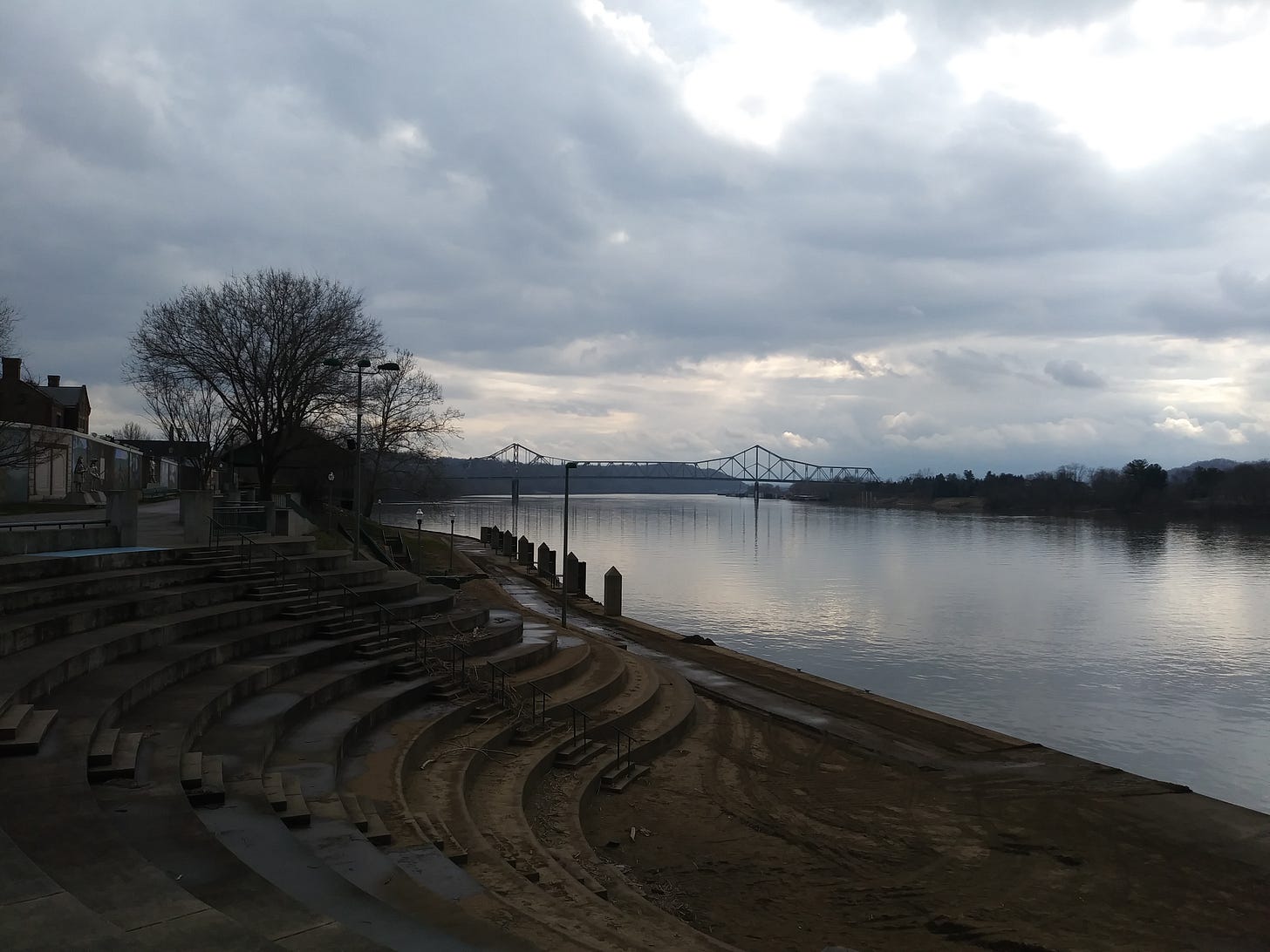On this Monday, the Ohio River reached flood stage at Point Pleasant, West Virginia.
The flood that began on the lower Ohio eight days earlier now covered 716 miles of the river, from the lowlands at Cairo, Illinois, to the Appalachian foothills at Point Pleasant.
At Cairo and Paducah, Kentucky, where flooding was first reported, the river had risen five to seven feet since January 10. Up the river in Evansville, Indiana, the river had risen 15 feet. Farther up the river in Louisville, Kentucky, the river had risen more than 13 feet in the same period of time.
Above Louisville in Cincinnati, Ohio, the river was nearly 16 feet higher than a week earlier. And at Portsmouth, Ohio, and Point Pleasant, the river had climbed 20 feet in eight days.
These cities and towns were noteworthy because they were points along the Ohio River that were routinely monitored.
However, they also signaled trouble for dozens of unmentioned towns and communities that hugged the banks of the swelling Ohio River — places such as Marietta, Ohio; Huntington, West Virginia; Maysville, Kentucky; Jeffersonville, Indiana; Shawneetown, Illinois; and many more.
Why was the Ohio River rising so rapidly?
There was a pretty simple explanation. All that rain had to go somewhere.
More Rain
Essentially, the rain hadn’t stopped. Yes, there were periods of lesser or even no rain, but, in total, rain fell at alarming rates in the first half of January, drenching the Ohio Valley. The heaviest rainfall was on January 13, 14 and 17.
With a massive weather system stalled above the Ohio Valley, the rain fell near the Ohio River and quickly entered it. The rain also filled the river’s many tributaries.
As the American Red Cross would later write, “The peculiarity of the flood became obvious. Tributaries at flood in their lower reaches [near the Ohio River] were untroubled farther back.”
Flooding tributaries entering a flooding Ohio River put a tremendous burden on the entire Ohio River basin, an area of more than 200,000 square miles that drained parts of 14 states. The water rose, backed up, pooled and spread out.
The Red Cross would later say it anticipated a major disaster by mid-January.
“[I]t was apparent that there would be no rest for the Red Cross. A flood greater than the one of the previous spring was imminent.”
The “one of the previous spring” was a reference to the March 1936 flood, which was a significant disaster, particularly along the upper Ohio River. But it was not a “thousand-year flood,” as one historian would later describe what was developing in January 1937.
For many people in the Ohio Valley, the current flood would leave a permanent mark on their communities and lives, unlike anything that came before or after.
But let’s not look ahead too much. At this moment, we are still near the beginning.
Start at the beginning of The 1937 Flood Journal or access the archives.
FRIED BOLOGNA: Family Stories from the American Midwest and Upland South Join me for stories about my ancestors who lived, worked and traveled in the hills and along the rivers of Arkansas, Illinois, Indiana, Iowa, Missouri and beyond.






